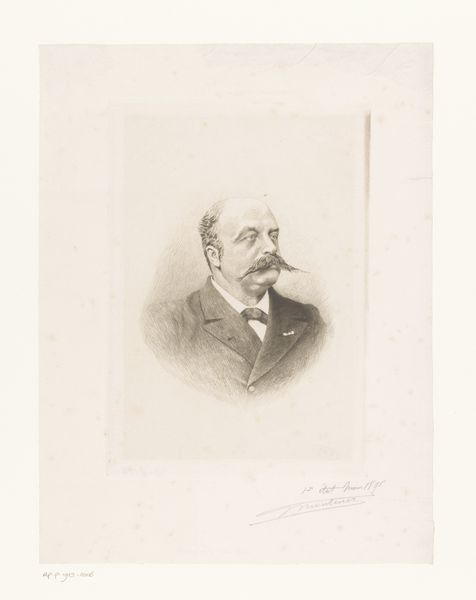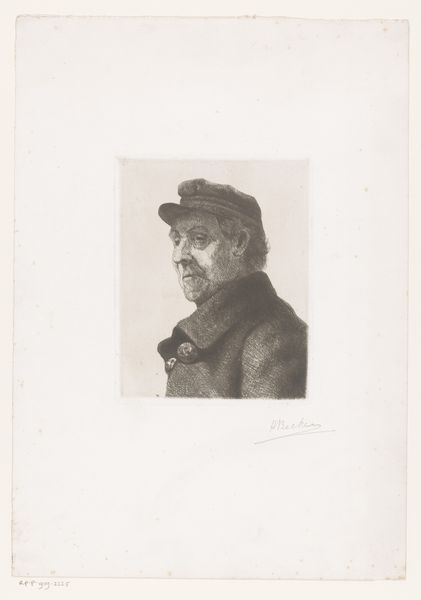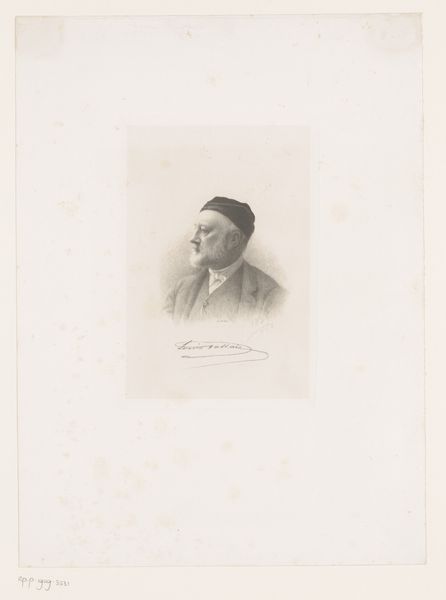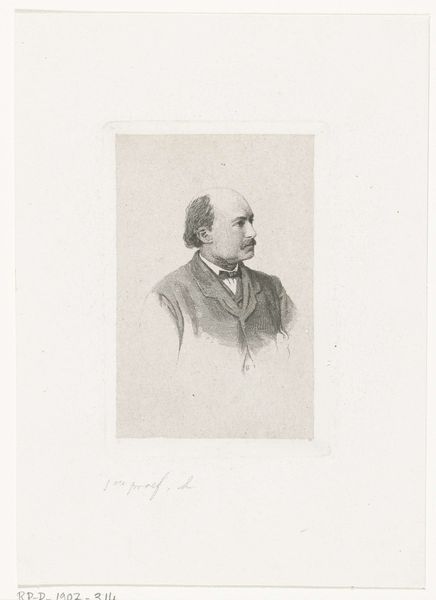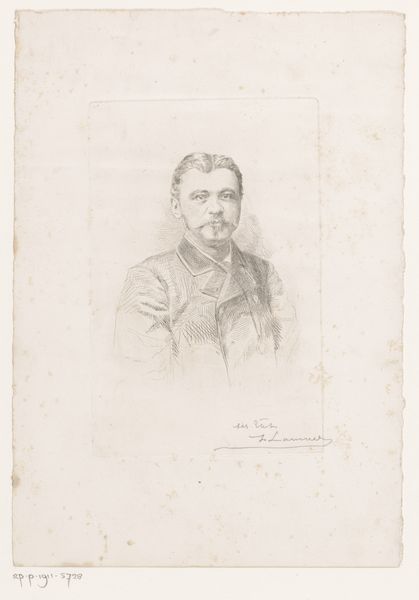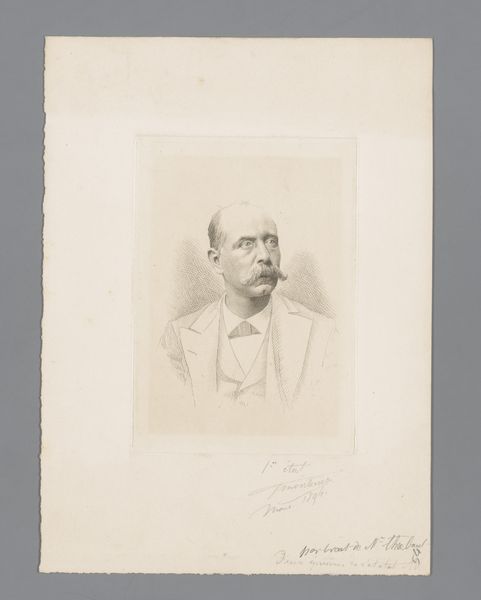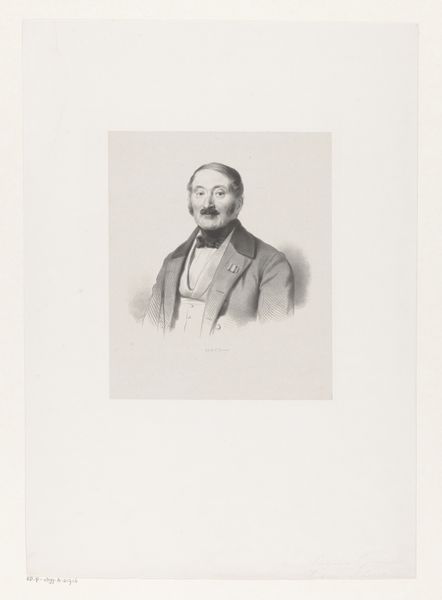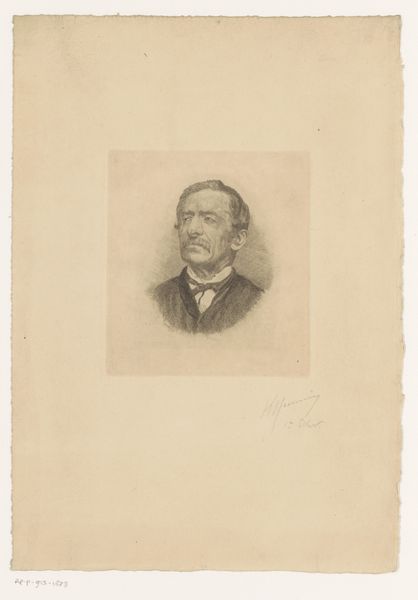
drawing, pencil
#
portrait
#
pencil drawn
#
drawing
#
charcoal drawing
#
figuration
#
pencil drawing
#
pencil
#
portrait drawing
#
academic-art
#
realism
Dimensions: height 144 mm, width 98 mm
Copyright: Rijks Museum: Open Domain
Curator: Standing before us is a drawing, simply titled *Portret van een onbekende man met hoed*, or *Portrait of an Unknown Man with a Hat*, made sometime between 1831 and 1890, attributed to Jean Baptiste Pierre Michiels, and held here at the Rijksmuseum. Editor: My first impression is of incredible precision. The crosshatching to build up the tones on the face and clothing feels so controlled. Curator: The artist uses pencil, and possibly charcoal, judging by the darker shadows. The academic approach is quite apparent. Editor: Precisely. These were commercially available pencils being put to the service of a fine art portrait. Did Michiels have connections within the developing manufacturing infrastructure of graphite? And that hat, is it an object for personal use, or part of a constructed persona aimed at viewers? Curator: An interesting proposition! The subject’s social standing is ambiguous isn’t it? While his dress suggests a bourgeois comfort, his anonymity raises questions about who such portraits served, and why they still speak to us today. It definitely gives you a window into 19th-century portraiture practices, and who was deemed worthy of memorialization, or, more broadly, what statements such pieces aimed to produce and circulate to the contemporary world. Editor: Yes, and the institutions displaying it—today, in the Rijksmuseum—help continue those established practices. Think of how this museum helps craft specific understandings of art and history! It's also striking how this relatively "low" medium grants insight into someone’s potential status. Perhaps we might examine archival purchase records to better appreciate how graphite was viewed. Curator: That could shed light on who these materials were intended to serve! Looking at the hatchmarks so meticulously applied to capture the fall of light, however, what kind of labor are we observing here? How was it different to paint? Was pencil work for practice? Or was the labor of pencil taken seriously as artistic work? Editor: Excellent question! Seeing this artwork reminds us how much labor is contained within such objects, while museums also perpetuate systems around classifying artwork by a certain kind of material status, something "high", something "low", both within the market, and how visitors engage with the materials used to produce art. Curator: A fruitful discussion; perhaps by questioning established notions about materials and context, we challenge how such pieces of art can function within contemporary spaces. Editor: Exactly. Understanding the image's production and the hands that crafted it offers fresh ways to think about history.
Comments
No comments
Be the first to comment and join the conversation on the ultimate creative platform.

